What is transfer pricing?
Broadly, transfer pricing is how profit is allocated among commonly controlled entities. For U.S. federal income tax purposes, transfer pricing derives its importance from the U.S. Internal Revenue Code (IRC”) section 482. This law allows the U.S. Internal Revenue Service (“IRS”) to adjust the taxable income of “related parties” if it is of the view that the related party prices are causing the avoidance of income taxes or fail to reflect the correct attribution of income, deductions, or credits.
You may have heard that “intercompany arrangements should be at arm’s length terms,” but what does this mean? Under IRC section 482, related party transactions must be at arm’s length terms, meaning the price charged or paid by a related party must be the same price charged or paid by an unrelated party under the same (or similar) circumstances. This principle is intended to prevent the potentially abusive shifting of income, deductions, or credits among related parties. Section 482 regulations contain vast rules on transfer pricing surrounding the arm’s length principle, including the selection of comparables, the different transfer pricing methods, and rules on special circumstances, e.g., sharing of costs and transfers of intangibles.
The following is an example of the potentially abusive shifting of income, deductions, or credits that the United States Congress had concerns about when it enacted section 482 in the cross-border context. Let’s assume that a foreign corporation (“Foreign Parent”) from a low-taxed jurisdiction manufactures products outside of the United States, and owns 100% of the stock of a U.S. subsidiary (“Subsidiary”) to sell the products in the United States to retailers and customers. The Subsidiary has various employees, which are salespersons, and has its own advertising and promotion expenses. The Foreign Parent sells the products to the Subsidiary for $100 and the Subsidiary sells the products in the U.S. for $105. After expenses, the Subsidiary has no taxable income. The Foreign Parent sells the same products to other subsidiaries in other countries for less.
The IRS would argue that the price paid by the Subsidiary is too high and therefore is avoiding corporate income tax and withholding tax on the additional income which should be allocated to the Subsidiary.
Which persons and transactions are subject to the transfer pricing requirements of IRC section 482?
Any type of entity is subject to IRC section 482 irrespective of its place of organization, operation, or the type of trade or business, or whether it’s an exempt organization, including a:
- sole proprietorship,
- partnership,
- trust or estate,
- association or corporation
Transactions subject to IRC section 482 include (but are not limited to):
- Transactions within the US or across borders, whether intended to evade tax or not
- Purchase/sale of tangible goods/assets
- Arrangements relating to intangible property (trademarks, trade names, know-how, etc.)
- Provision of services
- Financing arrangements
Finally, what are the transfer pricing reporting requirements in the U.S.?
Taxpayers may avoid significant penalties resulting from a transfer pricing adjustment to the extent they can provide certain documentation evidencing that they had selected and applied a transfer pricing method that provided the most reliable measure of an arm’s-length result. The documentation requirements are set forth in Treas. Reg. § 1.6662-6(d). In addition, the existence of a transfer pricing analysis may help demonstrate upon an initial examination from the IRS that there is low compliance risk and reduce the need for a further transfer pricing examination.
However, unlike in other countries, currently, there is no requirement to file transfer pricing analyses or reports with the United States with the annual income tax filing. Rather, the supporting documentation described above must be presented upon request by the IRS, usually in the event of a tax examination.





